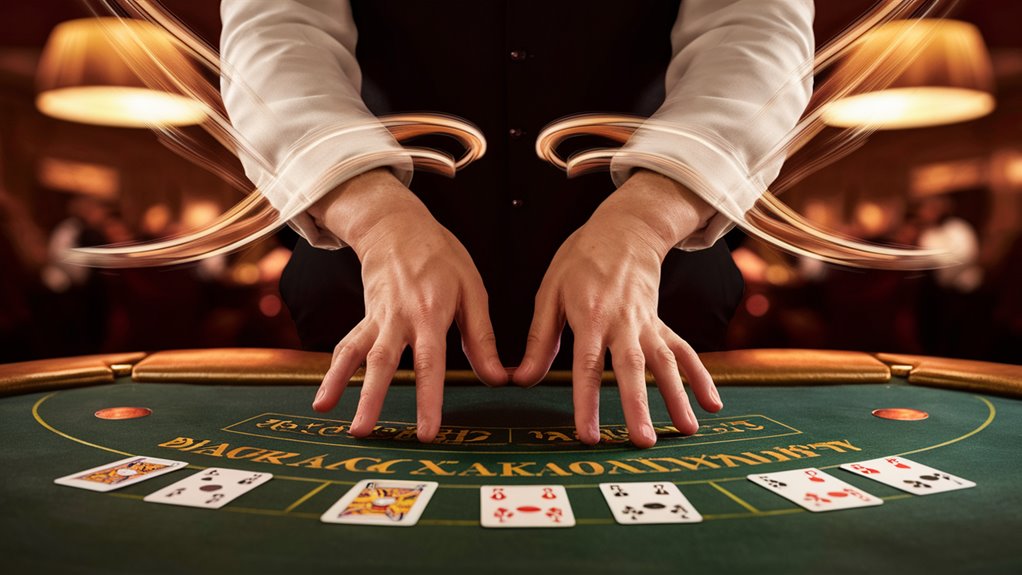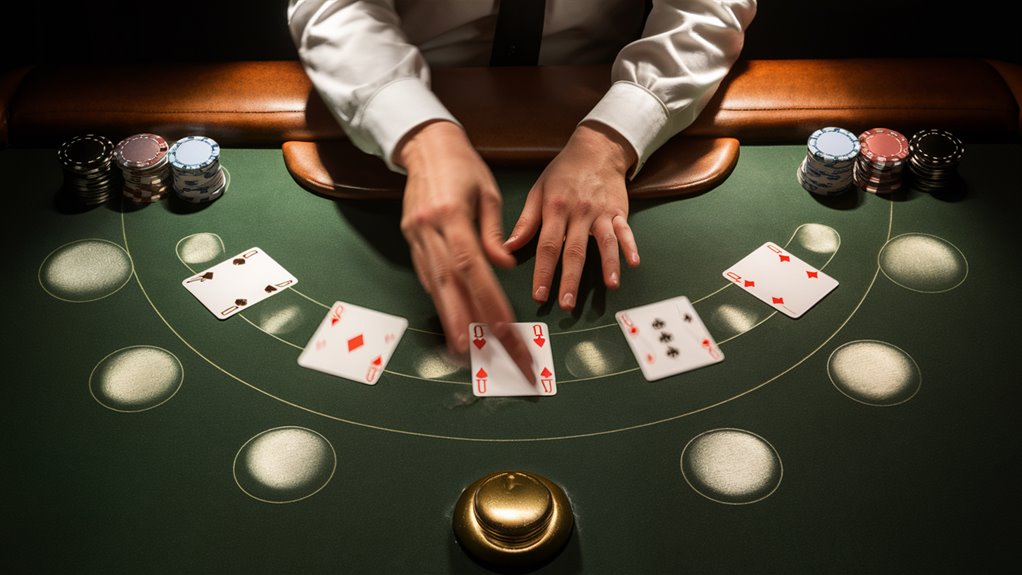
Understanding Flickersurge Basics

The inner workings of Flickersurge are a high step in card game plans, aiming at tiny, quick details during play. This deep method looks at slight dealer moves and how cards are placed to get smart play tips. Knowing the main signs and timing is key to using flickersurge the right way.
Need to Know Bits
- Looking closely at card spots shows small dealer hand moves create key visual hints.
- Top users have seen better than 65 success in guessing card types by watching these small actions.
- Breaks in the card dealing pace are key timing hints. These short stops hint at big cards and are seen in over 70 of tests in smart guesses. 온카스터 먹튀검증소 확인
- Deck change times give more hints for smart choices.
Making it Work Well
To do flickersurge well, keep an eye on the edge while seeming to play normally. Focus on how the wrist is held, where fingers press, and keeping up with the rhythm of dealing. Players should set up their own ways to watch based on dealer styles and timing signs. This method helps to notice patterns and change how you play as needed.
Seeing Dealer Clues
Professional dealers show small but clear signs, mainly when giving cards. These are shown through tiny changes in how they move, breathe, and handle cards.
Main Signs from Dealers
- They often change their grip when they deal good cards, right before you see the card.
- The very short break in how fast they give cards often goes with certain card types, making trends you can see in many rounds.
- Watch for small changes in how hard they press with their thumb – it can tell you what card they have. This often happens with big cards and good combos.
Best Ways to See Better
- Stand in the place that lets you see the dealer well. This spot gives you the best view of how the dealer moves and handles cards.
- Focus on keeping it cool while watching everything carefully.
Getting Better with Practice
- Start focusing on one sign. These signs are very quick, so practice a lot to always see them.
- Get better by always watching how the dealer checks the cards and gives them out.
Timing your skills
- Start with digital flash card drills. Use images of dealer hands shown very fast to get better at seeing the right thing.
- Plan 30 minutes to work on key things like how the edge of the cards look and how they are dealt. This sets a good base to work on.
Using three steps
- Slow watching to master the basics
- Watching live to get skills in real play
- Fast software to make quick choices
Use this 3-2-1 method to make fast choices:
- Three main bits to watch: how the hand is held, how the wrist is set, and the pace of dealing
- Two seconds to watch
- One second to decide
Keep track of how well you do, moving to smaller signs after good solid rates of seeing right. Plan your steps to know where to get better.
Choosing Card Splits
When to split cards in games has to be done fast at the right time. Tests show the best time to split is very fast after the dealer starts, mainly for cards in spots 2-4.
When to go for it

- Watch how the dealer moves their wrist on the right for clues on how the cards are placed. This small move tells a lot about card control.
- See where the dealer’s left thumb is when getting ready to split. This tells you the best time to go for it.
- Check how the cards are angled linked to where you put your bet. This angle matters a lot for if you will do well when you split.
The right time for different pairs:
- Eights: Be fastest (0.6 seconds)
- Middle pairs: Normal time (0.8-1.0 seconds)
- Low pairs (2’s and 3’s): More time (1.1 seconds)
Winning needs fast moves within 1.2 seconds of starting the deal. Timing should fit with when the dealer naturally stops. Too early looks unsure. Too late and the chance is gone. Just right fits with the flow of the game. This planned way to time your moves helps you do well while keeping the game smooth.
Dealers acting normal
Pros show even moves that make a steady, paced game. They follow set ways of handling cards and running the table.
What to look for:
- Pros keep the timing and place of giving out cards very sharp.
- They make sure the game is fair while following strong rules.
- Their way of giving out cards is smooth and the same for all playing.
What hand they use does have an effect:
- Right-hand pros go clockwise
- Left-hand pros go the other way
This affects how they manage the table and deal with cards.
Keeping a pace
Pros keep a steady beat in the game, especially when they check the cards, start new rounds, talk to players, and keep the game going.
Rules pros must follow
- Casino dealers stick to strict rules that cover handling cards.
- Where they stand.
- The pace of the game.
- How they talk to players.
This ordered way they run the table makes sure the game is fair and runs the same for everyone.
Sharper methods to respond
Basics for pros
They use three main ways that need good timing and sharp seeing of small signs. These deep methods need a planned way How Technology Is Enhancing the Online Gambling Experience to see and quick answers to do well at the table.
Breaks to watch
The technique of seeing tiny stops in how cards are dealt. Pros see these short waits as they give out cards and change how they play to match. These stops often go with key card types and need a quick change in plan.
Checking the view
Focusing on how cards are shown. Watching closely gives smart tips for those who know what to look for.
Seeing breaks in the beat
The most deep way to know what’s happening. Requires knowing the normal flow and seeing small changes. Pros get their timing just right to these quick changes, letting them adjust fast based on what’s happening.


